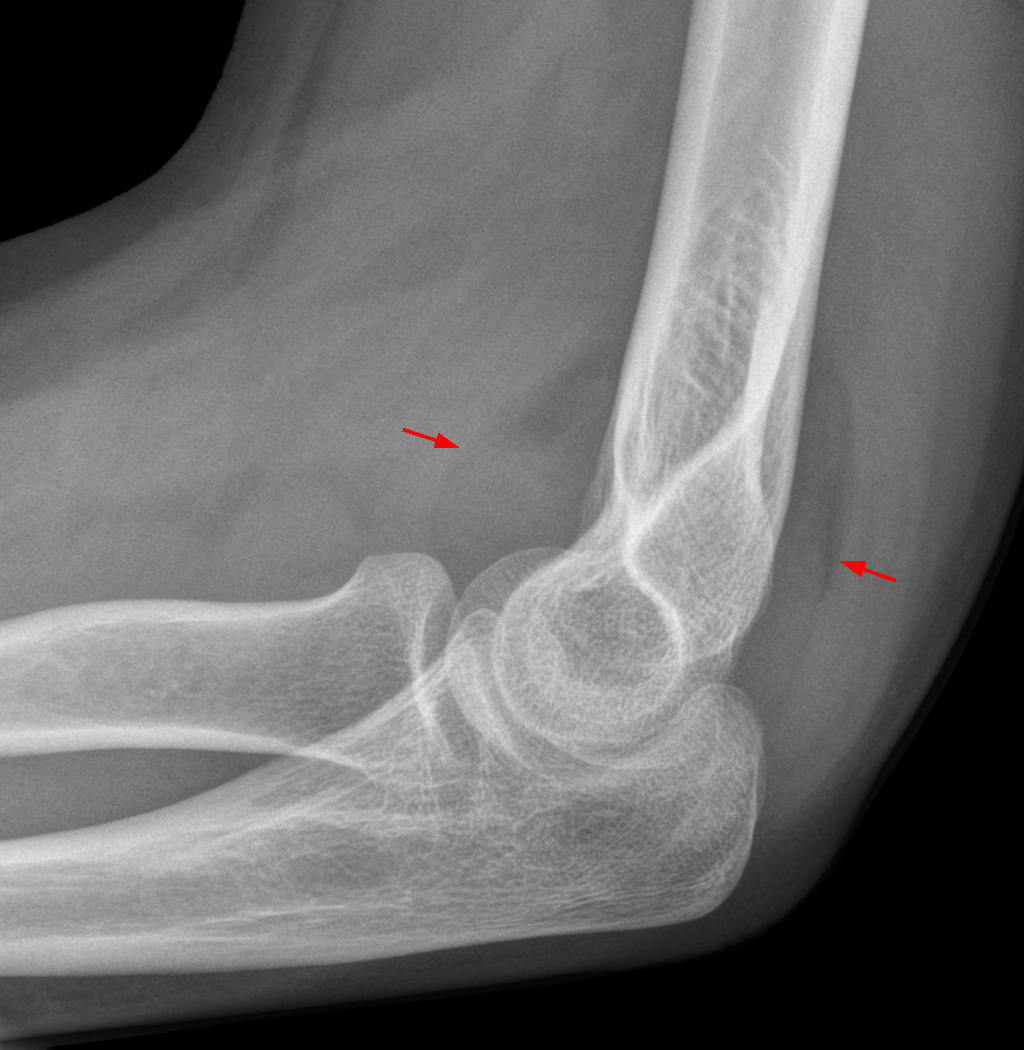sail sign of the elbow on:
[Wikipedia]
[Google]
[Amazon]


 The fat pad sign, also known as the sail sign, is a potential finding on elbow
The fat pad sign, also known as the sail sign, is a potential finding on elbow

 The fat pad sign, also known as the sail sign, is a potential finding on elbow
The fat pad sign, also known as the sail sign, is a potential finding on elbow radiography
Radiography is an imaging technique using X-rays, gamma rays, or similar ionizing radiation and non-ionizing radiation to view the internal form of an object. Applications of radiography include medical radiography ("diagnostic" and "therapeu ...
which suggests a fracture of one or more bones at the elbow. It is may indicate an occult fracture that is not directly visible. Its name derives from the fact that it has the shape of a spinnaker (sail). It is caused by displacement of the fat pad A fat pad (aka haversian gland) is a mass of closely packed fat cells surrounded by fibrous tissue septa.TheFreeDictionary > Fat padCiting: Mosby's Medical Dictionary, 8th edition. 2009 They may be extensively supplied with capillaries and nerve end ...
around the elbow joint. Both ''anterior'' and ''posterior'' fat pad signs exist, and both can be found on the same X-ray.
In children, a posterior fat pad sign suggests a condylar fracture of the humerus. In adults it suggests a radial head fracture.
In addition to fracture, any process resulting in an elbow joint effusion may also demonstrate an abnormal fat pad sign. Increased intracapsular fluid is also seen in several conditions other than fracture and this produces the abnormal fat pad sign. (toxic synovitis, septic arthritis, Juvenile Rheumatoid Arthritis, osteomyelitis of the distal humeral physis and secondary septic joint). In these instances, history and clinical examination in addition laboratory results (WBC, ESR, CRP) will guide the provider in determining whether to treat the condition as an occult fracture or continue workup for other pathology.
The fat pad sign is invaluable in assessing for the presence of an intra-articular fracture of the elbow. An anterior fat pad is often normal. However a posterior fat pad seen on a lateral x-ray of the elbow is always abnormal. The patient will be unable to flex their elbow and requires orthopaedic input.
Pathophysiology
The posterior fat pad is normally pressed in the olecranon fossa by the triceps tendon, and hence invisible on lateral radiograph of the elbow. When there is a fracture of the distal humerus, or other pathology involving the elbow joint, inflammation develops around the synovial membrane forcing the fat pad out of its normal physiologic resting place. This is visible as the "posterior fat pad sign" and is often the only visible marker of a fracture, particularly in the pediatrics population.References
{{DEFAULTSORT:Fat Pad Sign Musculoskeletal radiographic signs